Heedless car parking is listed as a major source of damage to Hanoi's newly-paved sidewalks, whose stones are projected to last for up to 70 years.
On Huynh Thuc Khang Street, the newly installed strip of sidewalk, with many spots still being worked on, has already been invaded by parking cars. As witnessed by your correspondent on Friday, drivers ignored the no-parking sign and left their cars on the sidewalk, despite the cement used in many spots of the walkway's renovation having yet to be set in. The weight of these car poses major harm to the adhesion of the newly-paved natural stones, as well as the outlook of the sidewalk after its renovation.
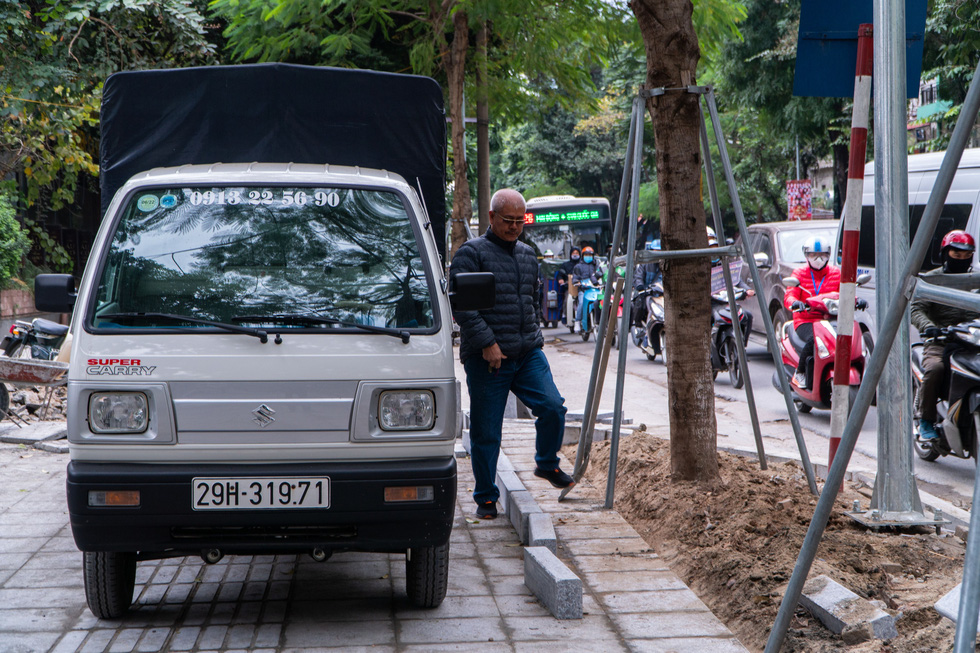
A truck is parked on the newly-installed natural stone paving on Huynh Thuc Khang Street in Hanoi. Photo: Pham Tuan / Tuoi Tre
Nguyen Minh Thanh, a 45-year-old resident of Dong Da District in Hanoi, said the prohibited practice of parking on the sidewalk has been perpetuated for quite some time, causing inconvenience for pedestrians. “Cars crowded the sidewalk, forcing us [pedestrians] to walk on the road. Now the sidewalk is just repaved, construction is not done, cement has not yet set, but the cars have lined up on it again,” Thanh complained. According to a document on the project to upgrade urban sidewalks from the Hanoi People’s Committee, the natural stones used to pave Huynh Thuc Khang Street are expected to endure 70 years in use.
Answering Tuoi Tre (Youth) newspaper on Friday, Nguyen Quang Huy, an official of the capital's construction department, the liability to inspect sidewalk construction belongs to the district-level People’s Committee where the construction site is located. Meanwhile, Dao Ngoc Nghiem, vice-president of the Vietnam Urban Planning and Development Association, the responsibility of administrative authorities, particularly Hanoi’s Department of Construction, needs to be addressed in this case. “Hanoi’s Department of Construction is the main agency in charge and administrative body [of the project], which is why they should take responsibility for the monitoring and implementation of the stone paving,” Nghiem stated.
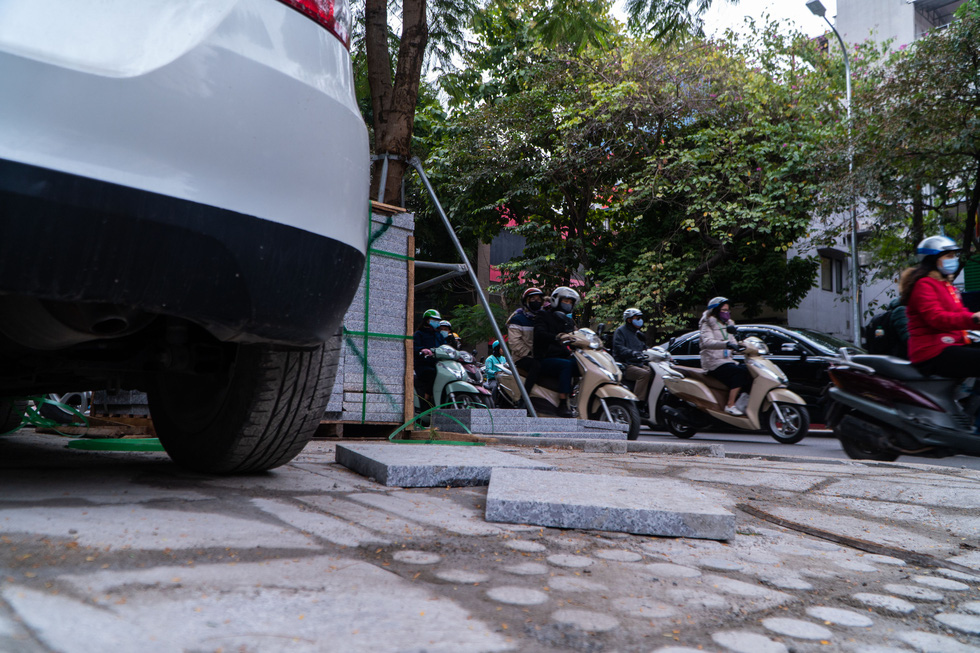
Slabs of natural stone are stacked on the sidewalk of Huynh Thuc Khang Street in Hanoi. Photo: Pham Tuan / Tuoi Tre
Earlier, Tuoi Tre have reported on the disintegration of stones used to pave major streets in Hanoi, namely Nguyen Trai, Tran Duy Hung, and Khuat Duy Tien. Claimed to have a 50-70-year lifespan, the natural stone paving on these streets crumbled after only three years in use. Addressing this issue, Huy remarked that the duration of a construction project depends on multiple variables, including materials, input quality, as well as building operations and the realistic use of the project. “The sidewalk is just paved, yet cars were seen climbing on it. No kind of stone can ever endure that,” he said. According to Hoang Ngoc Thang, the deputy head of the Hanoi Agency for Construction Quality Inspection under the city’s construction department, the natural stone-paved sidewalk can last for 20-30 years if reserved for pedestrians only.
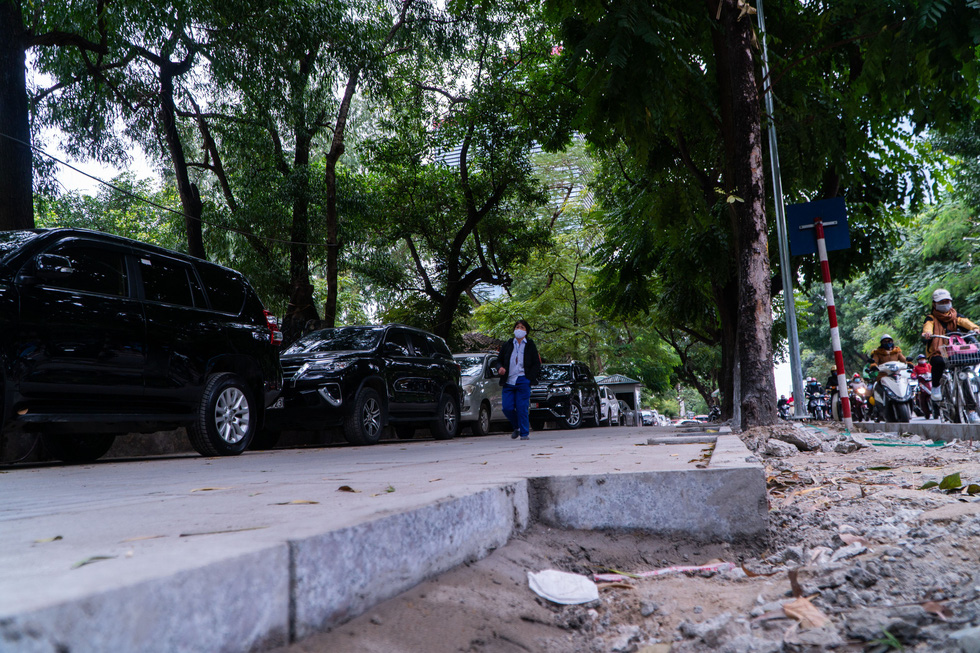
Cars are seen lined up on the newly-installed natural stone paving on Huynh Thuc Khang Street, Hanoi. Photo: Pham Tuan / Tuoi Tre
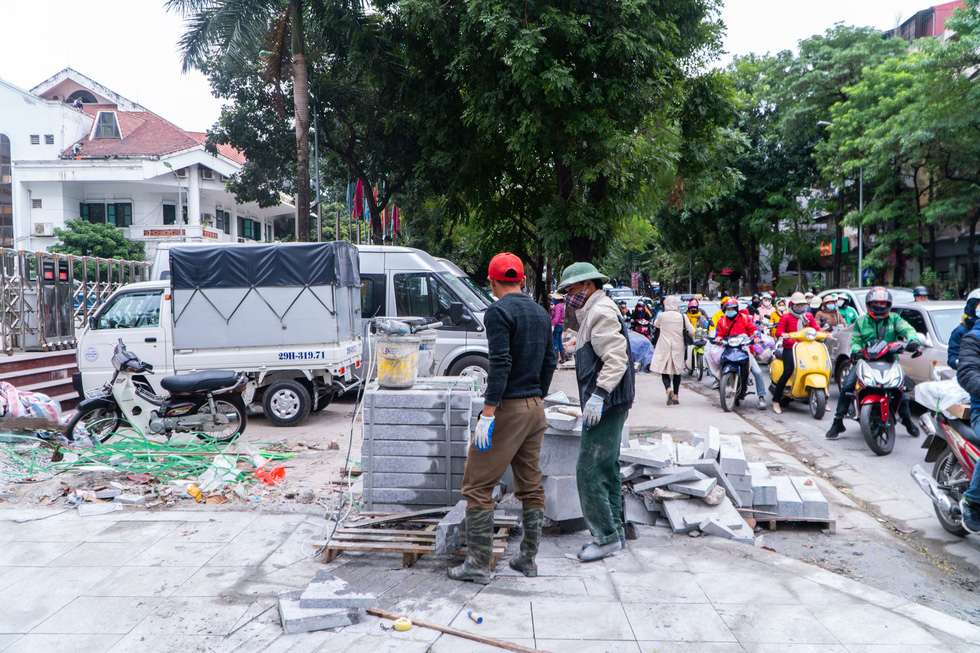
A construction worker installs natural stone paving on Huynh Thuc Khang Street, Hanoi. Photo: Pham Tuan / Tuoi Tre
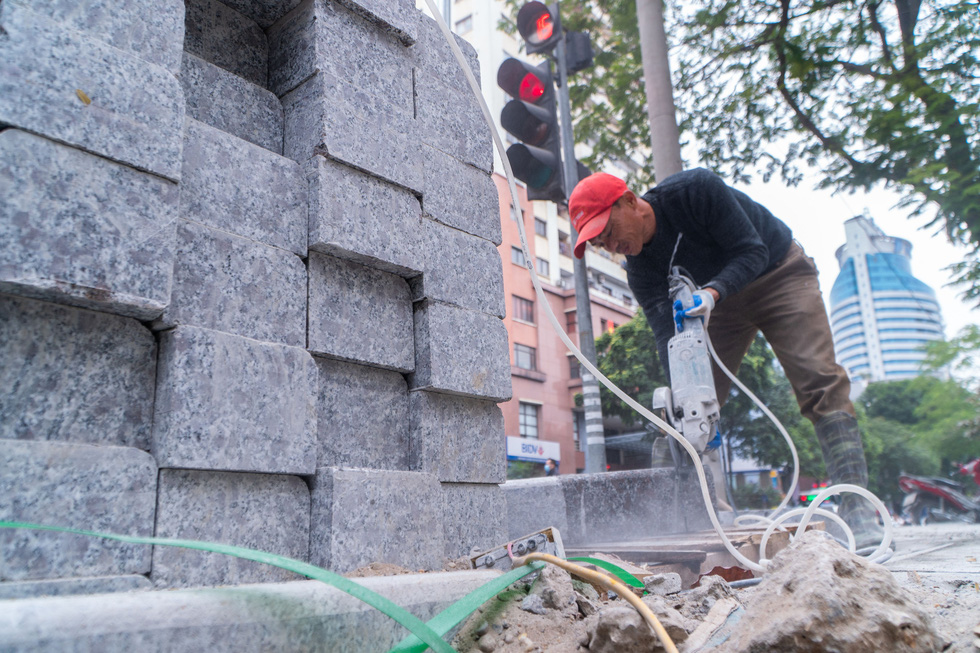
Construction workers install natural stone paving on Huynh Thuc Khang Street, Hanoi. Photo: Pham Tuan / Tuoi Tre

A construction worker cuts a slab of stone to pave Huynh Thuc Khang Street, Hanoi. Photo: Pham Tuan / Tuoi Tre

A construction worker installs natural stone paving on Nguyen Van Huyen Street, Hanoi. Photo: Pham Tuan / Tuoi Tre
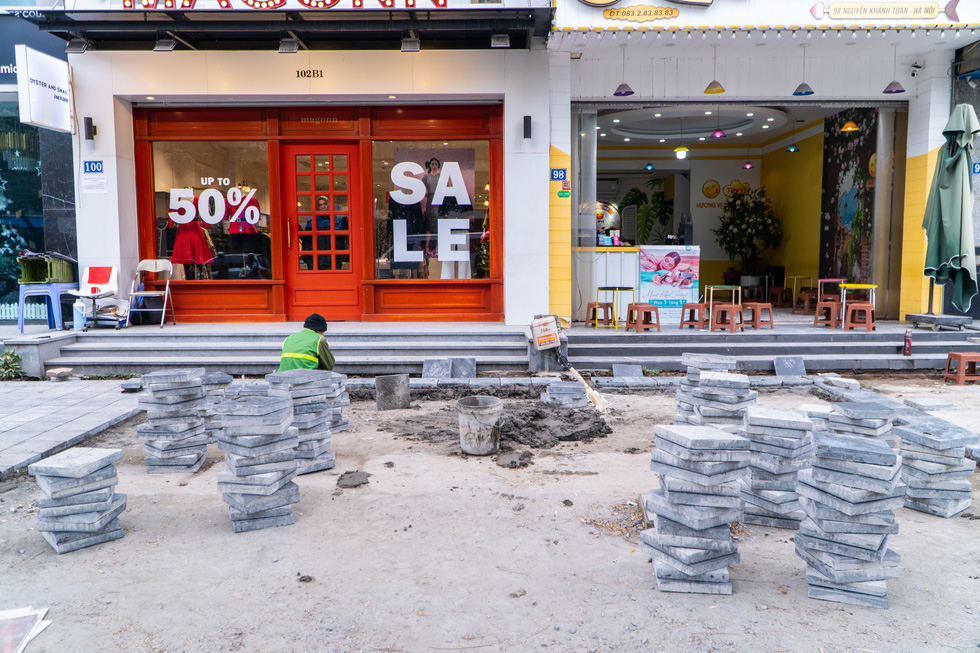
A construction worker installs natural stone paving on Nguyen Van Huyen Street, Hanoi. Photo: Pham Tuan / Tuoi Tre

A construction worker installs natural stone paving on Nguyen Van Huyen Street, Hanoi. Photo: Pham Tuan / Tuoi Tre
 Hotline
Hotline Email
Email

